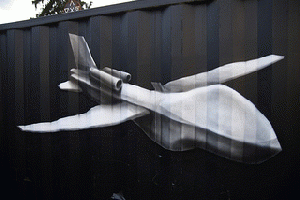Since November 2002, when a CIA drone strike destroyed the SUV of "al-Qaeda's chief operative in Yemen," Qaed Salim Sinan al-Harethi ("U.S. kills al-Qaeda suspects in Yemen"), it's been almost 13 years of unending repeat headlines. Here are a few recent ones: "U.S. drone strike kills a senior Islamic State militant in Syria," "Drone kills ISIL operative linked to Benghazi," "Drone kills four Qaeda suspects in Yemen," "U.S. drone strike kills Yemen al-Qaida leader Nasir al-Wuhayshi," "U.S. drone strikes target Islamic State fighters along Afghanistan-Pakistan border." Those last strikes in Eastern Afghanistan reportedly killed 49 "militants." (Sometimes they are called "terror suspects.") And there's no question that, from Somalia to Pakistan, Libya to Syria, Yemen to Iraq, various al-Qaeda or Islamic State leaders and "lieutenants" have bitten the dust along with significant numbers of terror grunts and hundreds of the collaterally damaged, including women and children.
These repetitive headlines should signal the kind of victory that Washington would celebrate for years to come. A muscular American technology is knocking off the enemy in significant numbers without a single casualty to us. Think of it as a real-life version of Arnold Schwarzenegger's heroic machine in certain of the Terminator movies. If the programs that have launched hundreds of drone strikes in the backlands of the planet over these years remain "covert," they have nonetheless been a point of pride for a White House that regularly uses a "kill list" to send robot assassins into the field. From Washington's point of view, its drone wars remain, as a former CIA director once bragged, "the only game in town" when it comes to al-Qaeda (and its affiliates, wannabes, and competitors).
As it happens, almost 13 years later, there are just one or two little problems with this scenario of American techno-wizardry pummeling terrorism into the dust of history. One is that, despite the many individuals bumped off, the dust cloud of terrorism keeps on growing. Across much of the Greater Middle East and northern Africa, the drone assassination program continues to act like a recruitment poster for a bevy of terror outfits. In every country (with the possible exception of Somalia) where U.S. drone strikes have been repeatedly employed, the situation is far worse today than in 2001. In the two countries where it all began, Afghanistan and Yemen, it's significantly -- in the case of Yemen, infinitely -- worse.
Even the idea of war without casualties (for us, that is) hasn't quite panned out as planned, not if, as TomDispatch regular Pratap Chatterjee reports today, you count the spread of post-traumatic stress disorder among the drone operators. In fact, given how humdrum headlines about the droning of terror leaders have become in our world, and the visible futility and failure that goes with them, you might think that someone in Washington would reconsider the efficacy of drones -- of, that is, an assassination machine that has proven anything but a victory weapon. In any world but ours, it might even seem logical to ground our terminators for a while and reconsider their use. In Washington, there's not a chance in hell of that, not unless, as Chatterjee suggests, both resistance and casualties in the drone program grow to such a degree that a grounding comes from the bottom, not the top. It turns out that -- remember your Terminator films here -- if a future John Connor is to stop Washington's robotic killing operations, he or she is likely to be found within the drone program itself. Tom
Killing by Committee in the Global Wild West
The Perpetrators Become the Victims of Drone Warfare
By Pratap ChatterjeeThe myth of the lone drone warrior is now well established and threatens to become as enduring as that of the lone lawman with a white horse and a silver bullet who rode out into the Wild West to find the bad guys. In a similar fashion, the unsung hero of Washington's modern War on Terror in the wild backlands of the planet is sometimes portrayed as a mysterious Central Intelligence Agency officer. Via modern technology, he prowls Central Asian or Middle Eastern skies with his unmanned Predator drone, dispatching carefully placed Hellfire missiles to kill top al-Qaeda terrorists in their remote hideouts.
So much for the myth. In reality, there's nothing "lone" about drone warfare. Think of the structure for carrying out Washington's drone killing program as a multidimensional pyramid populated with hundreds of personnel and so complex that just about no one involved really grasps the full picture. Cian Westmoreland, a U.S. Air Force veteran who helped set up the drone data communications system over southeastern Afghanistan back in 2009, puts the matter bluntly: "There are so many people in the chain of actions that it has become increasingly difficult to understand the true impact of what we do. The diffusion of responsibility distances people from the moral weight of their decisions."
In addition, it's a program under pressure, killing continually, and losing its own personnel at a startling and possibly unsustainable rate due to "wounds" that no one ever imagined as part of this war. There are, in fact, two groups feeling the greatest impact from Washington's ongoing air campaigns: lowly drone intelligence "analysts," often fresh out of high school, and women and children living in poverty on the other side of the world.
A Hyper-Manned Killing Machine
Here, then, as best it can be understood, is how the Air Force version of unmanned aerial warfare really works -- and keep in mind that the CIA's drone war operations are deeply integrated into this system.
The heart of drone war operations does indeed consist of a single pilot and a sensor (camera) operator, typically seated next to each other thousands of miles from the action at an Air Force base like Creech in Nevada or Cannon in New Mexico. There, they operate Predator or Reaper drones over countries like Afghanistan, Iraq, Pakistan, Somalia, Syria, or Yemen. Either of them might have control over the onboard Hellfire missiles, but it would be wrong to assume that they are the modern day equivalent of the Lone Ranger and his sidekick, Tonto.
In fact a typical "combat air patrol" may have as many as 186 individuals working on it. To begin with, while the pilot and the sensor operator make up the central "mission-control element," they need a "launch-and-recovery element" on the other side of the world to physically deploy the drones and bring them back to bases in Afghanistan, Saudi Arabia, and elsewhere. As with so much that the U.S. military now does, this work is contracted out to companies like Raytheon of Massachusetts.
And don't forget another key group: the imagery and intelligence analysts who watch the video footage the drones are beaming from their potential target areas. They are typically at other bases in the U.S.
Each member of the flight crew has an Air Force designation that specifies his or her task. The pilots are known as 18Xs, the sensor operators are 1Us, and the imagery analysts are 1N1s. The launch and recovery personnel are often former drone pilots who have quit the Air Force because they can make twice as much money working overseas for private contractors.
In charge of the flight operators are a flight operations supervisor and a mission intelligence coordinator who report to a joint force air and space component commander. In addition, there are "safety" observers and judge advocates (military-speak for lawyers) who are supposed to ensure that any decision to launch a missile is made in accordance with officially issued "rules of engagement" and so results in a minimum number of civilian deaths. They are often situated at the Combined Air and Space Operations Center at al-Udeid Air Base in Qatar.
But Predators and Reapers don't fly solo. They typically roam in packs of four aircraft known as "combat air patrols." Three of them are expected to be in the air at any given time, leaving one on the ground for refueling and maintenance. A fully staffed patrol should have 59 individuals in the field doing launch and recovery, 45 doing mission control, and 82 working on the data gathered.
(Note: You can view every article as one long page if you sign up as an Advocate Member, or higher).






